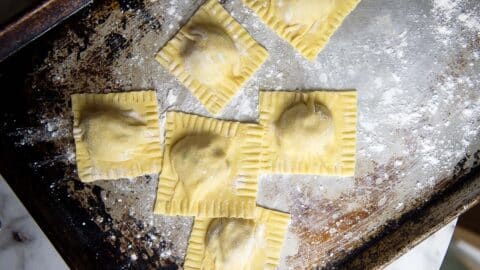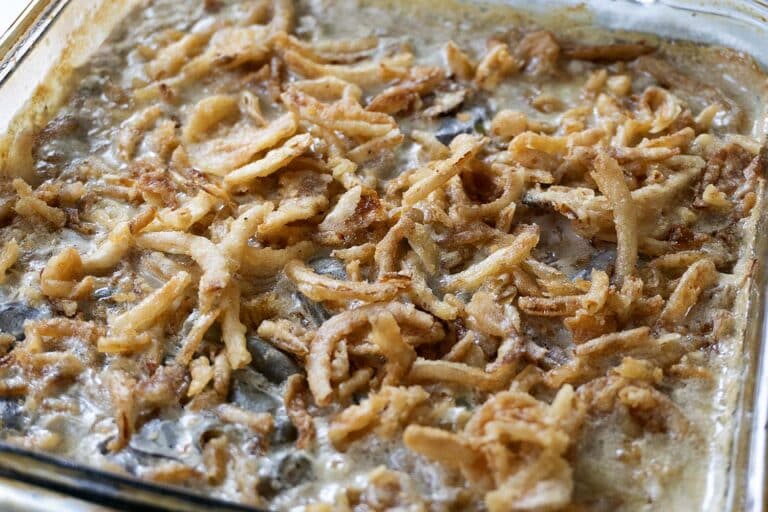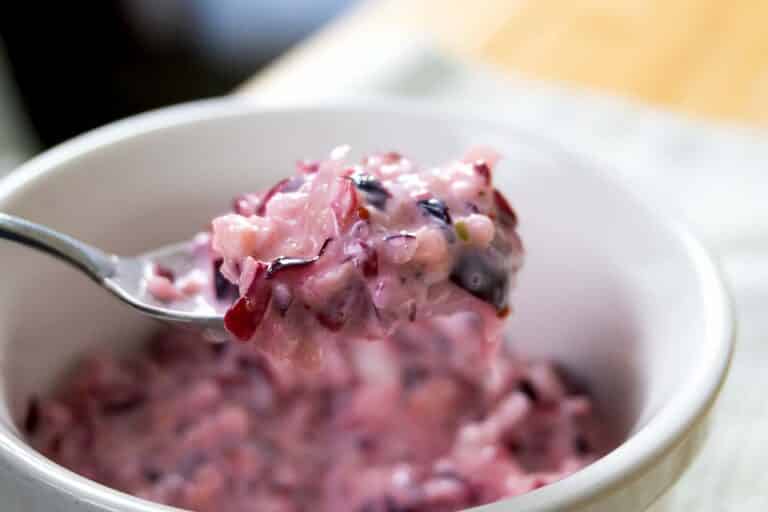Homemade Ravioli
Don’t be intimidated to make Homemade Ravioli! With just a little time and a handful of ingredients, you can have delicious, melt-in-your-mouth ravioli.
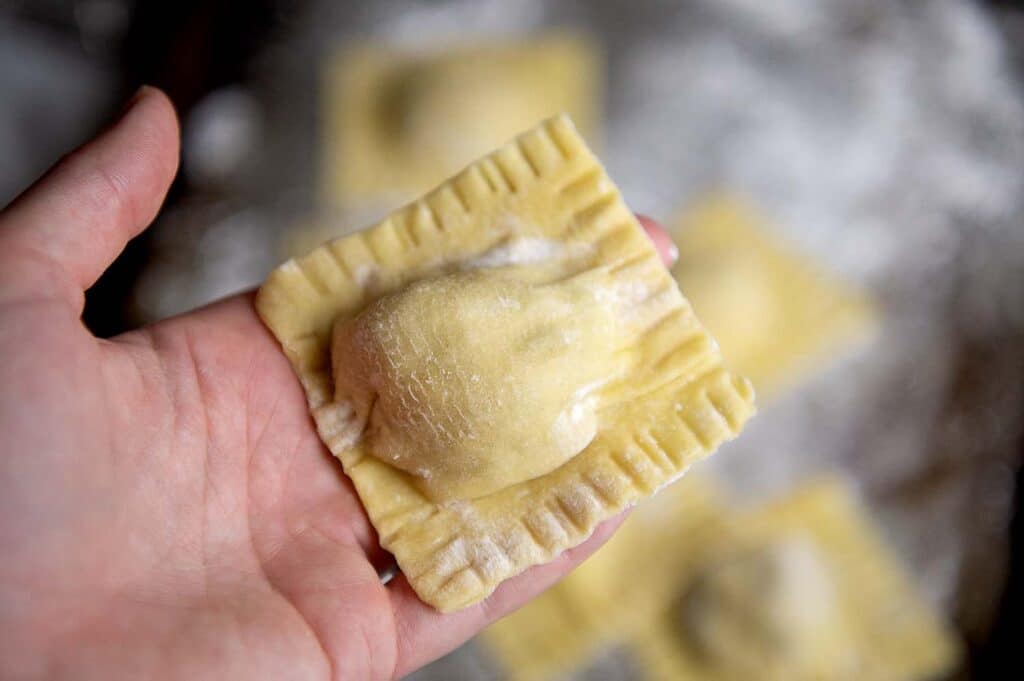
Homemade ravioli is one of those dishes that can elevate a simple meal into something special. Making your own ravioli from scratch can be a bit of a process, but it’s a labor of love that’s well worth the effort.
Ravioli is a traditional Italian dish that consists of pasta dough filled with a variety of fillings, then boiled and served with a sauce. While you can find pre-made ravioli in stores, there’s something incredibly satisfying about making it yourself. The process allows you to control the ingredients and customize the fillings to your taste. Plus, it’s a fun project that can be done solo or with family and friends.

What Makes This So Great?
Homemade ravioli is special because it combines simple ingredients to create a dish that’s greater than the sum of its parts. Freshly made pasta has a texture that’s hard to match with store-bought versions, and the fillings can be tailored to your preferences. Whether you prefer a hearty meat filling or a creamy ricotta mixture, homemade ravioli lets you be in charge of the flavors and textures.
What Kitchen Items Do You Need To Make This?
To make homemade ravioli, you’ll need a few essential kitchen items:
- Pasta machine maker/roller: This tool is crucial for rolling out the pasta dough evenly and thinly.
- Rolling pin: Useful for flattening the dough before passing it through the pasta machine.
- Bench knife: Helps in handling the dough and scraping off excess flour.
- Pastry brush: For moistening the edges of the ravioli to seal them properly.
- Skillet: To cook the filling ingredients.
- Food processor: Optional, but helpful for blending the meat filling to a smooth consistency.
- Cutting board and knife: For chopping the ingredients.
- Parchment paper: To prevent the ravioli from sticking.
- Clean towel: To cover the ravioli and prevent them from drying out.
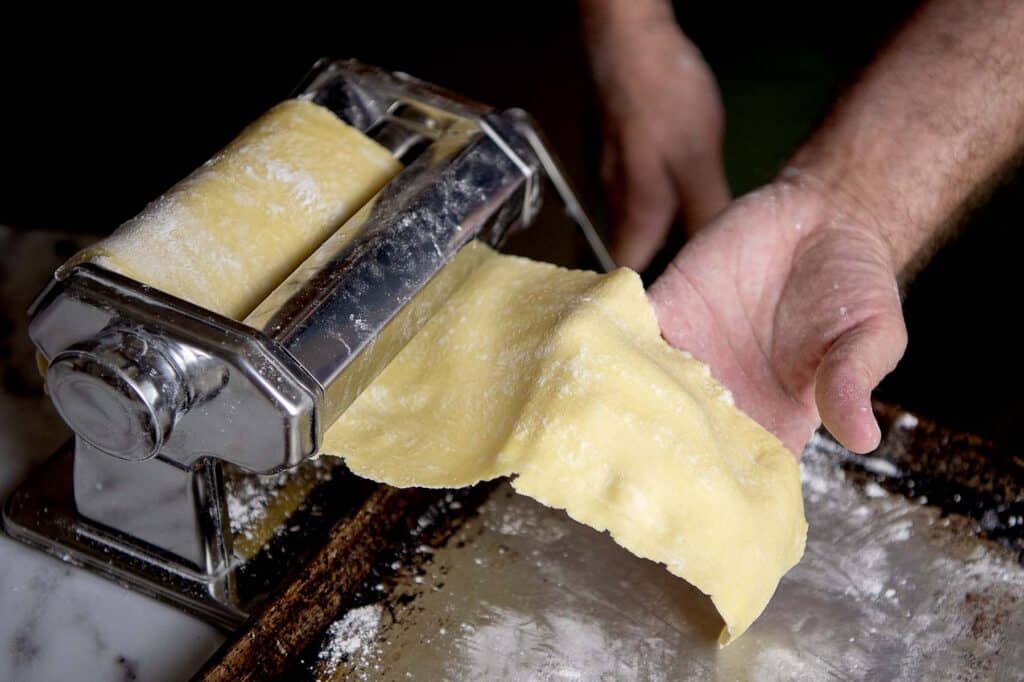
What Ingredients Are Needed For This Recipe?
For the Ravioli Dough:
- 2 cups (255g) all-purpose flour
- 2 whole eggs
- 4 egg yolks
- 1 tsp kosher salt
For the Meat Filling:
- 2 Italian sausages
- ¼ lb ground beef
- ½ white onion, chopped
- 4 garlic cloves
- ½ cup Parmesan cheese
- ¼ cup ricotta
- Salt and pepper to taste
- 1 egg
For the Ricotta Filling:
- ¾ cup ricotta
- ¼ cup Parmesan cheese
- 1 tsp lemon juice
- Pinch of nutmeg
- Salt and pepper to taste
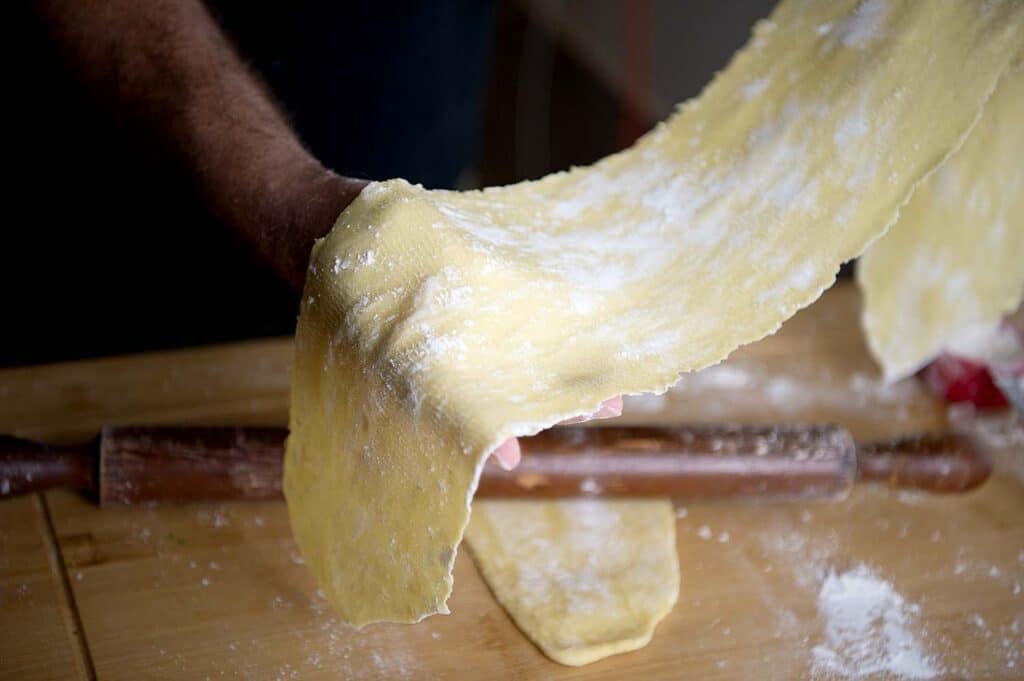
How To Make It
Make the Dough
- On a large, clean work surface, pour the flour into a mound. Make a well in the center and pour in the whole eggs, egg yolks, and salt.
- Use a fork to beat the eggs thoroughly, gradually incorporating the flour until a wet, sticky dough forms.
- Using a bench knife, scrape the excess dough from the fork and your fingers. Begin to fold additional flour into the dough with the bench knife, turning the dough each time until it feels firm and dry, forming a craggy-looking ball (about 2 to 5 minutes).
- Press the heel of your hand into the ball of dough, pushing forward and down. Continue until the dough develops a smooth texture similar to a firm ball of Play-Doh. Cover with plastic wrap and let it sit on the counter for 30 minutes.
For the Meat Filling
- While the dough is resting, heat a skillet over medium heat and add the chopped onion. Cook for a few minutes until translucent.
- Add the garlic and cook for another minute.
- Add the sausage and ground beef, breaking it up with a wooden spoon, and cook until done. Season with salt and pepper.
- Remove from heat and carefully add the mixture to a food processor. Process until smooth. Allow to cool for a few minutes.
- Transfer the meat mixture to a bowl and add both cheeses, salt, and pepper. Taste and adjust seasoning, then mix in the egg. Cover and refrigerate until ready to use.
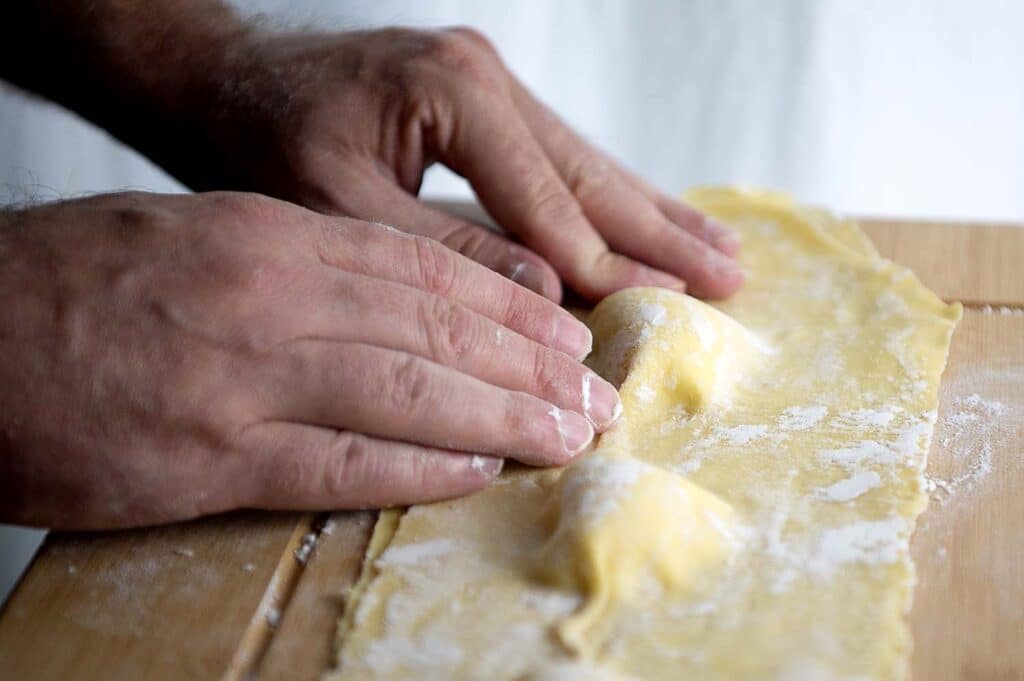
For the Ricotta Filling
- Mix the Parmesan, ricotta, nutmeg, salt, lemon juice, and pepper in a container.
- Taste and adjust seasoning if necessary. Cover and refrigerate until ready to use.
To Roll the Pasta
- Place a sheet of parchment paper on a tray or cutting board and dust lightly with flour.
- Unwrap the rested dough and cut it into quarters. Set one quarter on the work surface and re-wrap the remaining dough.
- With a rolling pin, flatten the quarter of dough into an oblong shape about 1/2 inch thick.
- Pass the dough through a pasta maker three times, starting with the widest setting and working your way down.
- Fold the first sheet along its midline to make a light crease and re-open.
- Place six heaping tablespoons of either filling half-inch apart along the length of the lower half. Moisten the upper half with a pastry brush dipped in water and fold over, pressing down to remove air bubbles and create a seal around the filling.
- Cut the ravioli into squares, removing any excess dough if needed. Use a fork to crimp around the edges.
- Place the ravioli on a lightly floured surface and cover with a clean towel to prevent drying. Repeat these steps until all of your dough or filling is gone.

To Cook
- At this point, the ravioli can be frozen by placing them on a parchment-lined rimmed baking sheet and freezing them completely. Transfer to a freezer bag, press out as much air as possible, and store in the freezer for up to two months. Frozen ravioli can be cooked straight from frozen (add 30 seconds to cooking time).
- To cook ravioli, bring a large pot of salted water to a boil. Cook the ravioli by submerging them in boiling water and cooking for three minutes (they should float). Serve with your favorite sauce.

What Is The History Behind This Recipe?
Ravioli has a rich history that dates back to the Roman Empire. It is believed that the first references to ravioli appeared in the writings of Francesco di Marco, a Venetian merchant from the 14th century. Traditionally, ravioli were filled with minced meat, fish, cheese, and vegetables. Each region in Italy has its own version of ravioli, showcasing the diverse culinary traditions of the country. Over time, ravioli became a beloved dish not only in Italy but around the world, celebrated for its versatility and deliciousness.
What Can I Switch Up To Make This Different If I Have Dietary Needs (Vegan/Vegetarian/Gluten Free)?
Vegan Ravioli:
To make vegan ravioli, you can substitute the eggs in the dough with a mixture of water and olive oil (for example, 3 tablespoons of water and 1 tablespoon of olive oil per egg). For the filling, you can use vegan ricotta or tofu blended with nutritional yeast, spinach, and seasonings.
Vegetarian Ravioli:
The ricotta filling in this recipe is already vegetarian-friendly. You can also get creative with other vegetarian fillings, such as roasted vegetables, mushrooms, or a mix of different cheeses.
Gluten-Free Ravioli:
For a gluten-free version, you can use a gluten-free all-purpose flour blend in place of the regular flour. The dough may be slightly more challenging to work with, so be patient and make sure to knead it well to achieve the right consistency.
Frequently Asked Questions
Do You Put Raw Meat In Ravioli?
No, you should always cook the meat before filling your ravioli. Cooking the meat ensures it’s safe to eat and also allows you to mix it with other ingredients for a flavorful filling.
Do You Cook Ravioli In Sauce or Water?
Ravioli should be cooked in boiling water. After they are cooked, you can then add them to your sauce of choice. Cooking them directly in the sauce can result in uneven cooking and a gummy texture.
How Long To Boil Fresh Ravioli?
Fresh ravioli typically take about three minutes to cook in boiling water. They should float to the top when they are done.
Can You Use Plain Flour For Ravioli?
Yes, plain all-purpose flour is commonly used to make ravioli dough. It provides the right balance of gluten to create a dough that’s easy to work with and has a good texture when cooked.
How Do You Keep Homemade Ravioli From Falling Apart?
To prevent homemade ravioli from falling apart, make sure to seal the edges well. Use a fork to crimp the edges and remove any air pockets around the filling. Additionally, handle the ravioli gently when transferring them to the boiling water.
How Should I Store This?
If you have leftover ravioli, you can store them in the refrigerator for up to three days. Place them in an airtight container to keep them fresh. For longer storage, you can freeze the ravioli. Place them in a single layer on a parchment-lined baking sheet and freeze until solid. Once frozen, transfer them to a freezer bag or container and store for up to two months. When you’re ready to cook them, you can boil them straight from the freezer, just add a little extra cooking time.
Making homemade ravioli is a rewarding experience that results in a delicious meal you can be proud of.
- 1 Pasta machine maker/roller
- 2 cups (255g) all purpose flour
- 2 whole eggs
- 4 egg yolks
- 1 tsp kosher salt
- 2 Italian sausages
- ¼ lb ground beef
- ½ white onion chopped
- 4 garlic cloves
- ½ cup Parmesan cheese
- ¼ cup ricotta
- salt and pepper to taste
- 1 egg
- ¾ cup ricotta
- ¼ cup Parmesan cheese
- 1 tsp lemon juice
- pinch of nutmeg
- salt and pepper to taste
- On a large, clean work surface, pour flour in a mound. Make a well in the center and pour the whole eggs, egg yolks, and salt into well. Use a fork to beat thoroughly. When combined, gradually incorporate flour into the eggs until a wet, sticky dough has formed.
- Using a bench knife, scrape excess dough from fork and fingers. Begin to fold additional flour into the dough with the bench knife, turning the dough each time until dough feels firm and dry, and can form a craggy-looking ball, 2 to 5 minutes.
- Press the heel of your hand into the ball of dough, pushing forward and down. Continue until dough develops a smooth texture similar to a firm ball of Play-Doh. Cover with plastic wrap and let sit on the counter for 30 minutes.
- While your dough is resting, make the fillings. Heat a skillet over medium heat and add your onion. Cook for a few minutes until translucent. Next, add the garlic and cook for another minute.
- Add the sausage and ground beef, breaking up with a wooden spoon, and cook until done. Season with salt and pepper. Remove from the heat and carefully add to a processor. Process until smooth. Allow to cool for a few minutes.
- Dump the meat mixture into a bowl, and add both cheeses, salt, and pepper. Taste and adjust seasoning. Then mix in egg. Cover and refrigerate until ready to use.
- Mix the Parmesan, ricotta, nutmeg, salt, lemon juice, and pepper in a container. Taste, and adjust seasoning if necessary. Cover and refrigerate until ready to use.
- Place a sheet of parchment paper on a tray or cutting board and dust lightly with flour. Unwrap rested dough and cut into quarters. Set one quarter on work surface and re-wrap remaining dough. With a rolling pin, flatten the quarter of dough into an oblong shape about 1/2 inch thick.
- Pass through a pasta maker 3 times, starting with the widest setting and working your way down.
- Fold first sheet along its midline to make a light crease and re-open. Place 6 heaping tablespoons of either filling half-inch apart along length of lower half. Moisten upper half with pastry brush dipped in water and fold over, pressing down to remove air bubbles and create a seal around filling.
- Cut ravioli into squares, removing any excess dough if needed. Use a fork to crimp around the edges. Place on a lightly floured surface and cover with a clean towel to prevent drying. Repeat steps until all of your dough or filling is gone.
- At this point, ravioli can be frozen: place ravioli on a parchment-lined rimmed baking sheet and freeze completely. Transfer to a freezer bag, press out as much air as possible, and store in freezer for up to 2 months. Frozen ravioli can be cooked straight from frozen (add 30 seconds to cooking time).
- To cook ravioli, bring a large pot of salted water to a boil. Cook ravioli by submerging in boiling water and cooking for 3 minutes (ravioli should float). Serve with your favorite sauce.

